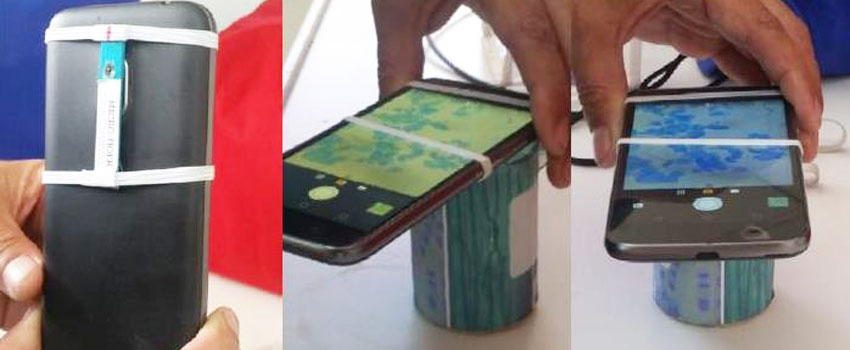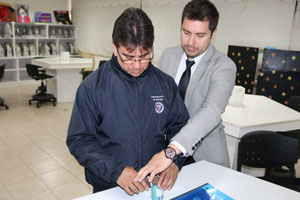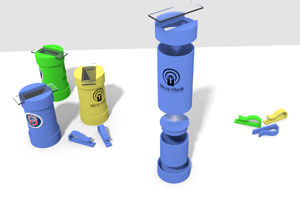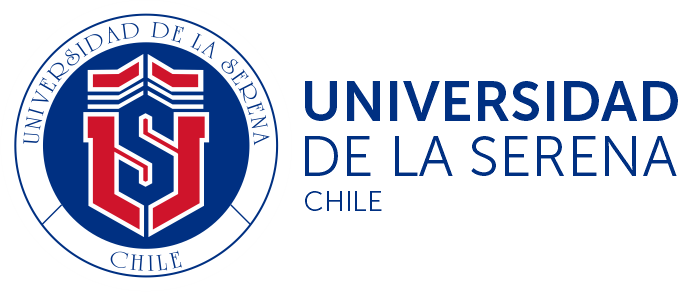- News
Adapter made from household waste allows you to capture microscopic images with a smartphone

The prototype seeks to be an innovative technological solution for the teaching and learning of microscopic biology, especially in public educational establishments in the country that do not have access to expensive optical microscopes.
The teaching of cell biology at a microscopic level is scarce in school and mainly rural educational centers, due to the lack of technological equipment to carry out practical laboratory work. In short, the main problem that microscopy has in the second basic cycle of Natural Sciences is the high cost of optical microscopes, since their prices range between 150 thousand and 2 million pesos.
 Given this background and as a way to contribute to the teaching and learning of microscopic biology in public educational establishments, both urban and rural, in the Coquimbo Region, and taking into account the new curricular bases and study programs of the MINEDUC , the specialized technician Edgardo Mundaca, and the professor of Biology and Natural Sciences, Mariano Rodríguez, with the sponsorship of the Research and Development Directorate (dependent on the Vice-Rector's Office for Research and Postgraduate Studies) and the Department of Biology of the University of La Serena , designed and created a smartphone adapter, made from electronic and household waste, that allows microscopic images to be captured.
Given this background and as a way to contribute to the teaching and learning of microscopic biology in public educational establishments, both urban and rural, in the Coquimbo Region, and taking into account the new curricular bases and study programs of the MINEDUC , the specialized technician Edgardo Mundaca, and the professor of Biology and Natural Sciences, Mariano Rodríguez, with the sponsorship of the Research and Development Directorate (dependent on the Vice-Rector's Office for Research and Postgraduate Studies) and the Department of Biology of the University of La Serena , designed and created a smartphone adapter, made from electronic and household waste, that allows microscopic images to be captured.
Edgardo Mundaca, who is an official at the ULS, explained that the idea was born in 2014 after receiving groups of professors and students from various establishments at the University, an instance in which they realized that many of them did not know how to use microscopes. , mainly because there are no resources to have this equipment in schools. “This year we have gone to the establishments and that reality has not changed,” said the author of this adapter built with sustainable material (toilet paper tubes, ice cream sticks, batteries, LED light, elastics, etc.) and that is adaptable to any mobile device.
 “88% of schools in Latin America do not have laboratory implementation. "This means that there is low scientific literacy," said Mariano Rodríguez, a graduate from the state campus, who added that the low-cost prototype could be used as a technological tool for teaching microscopic biology in the second basic cycle (5th grade). , 6th, 7th and 8th grade).
“88% of schools in Latin America do not have laboratory implementation. "This means that there is low scientific literacy," said Mariano Rodríguez, a graduate from the state campus, who added that the low-cost prototype could be used as a technological tool for teaching microscopic biology in the second basic cycle (5th grade). , 6th, 7th and 8th grade).
To ensure the permanence of this technological resource in the curriculum, manuals for the construction and use of Micro-Hoek were designed, led by a multidisciplinary team from the University of La Serena. The construction manual -protected by DIBAM- can be download here and will be available soon on the website of the Department of Biology of the house of higher education.
“The manual is free and each person in their homes and schools will be able to make their adapter. Anyone will have access to this guide,” said Mundaca, who is emphatic in indicating that Micro-Hoek has a social purpose.
Rodríguez, meanwhile, pointed out that next year they hope to incorporate the prototype and its manual in public establishments in La Serena and Coquimbo, and announced that later they will consider adding “founded didactic proposals, using didactic models of analogical teaching, conceptual change, inquiries that Today, at the Latin American level, they are widely used and have theoretical references.”
